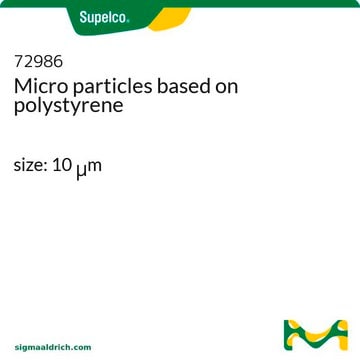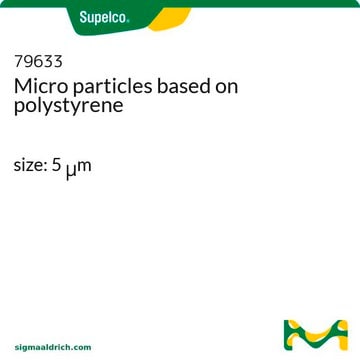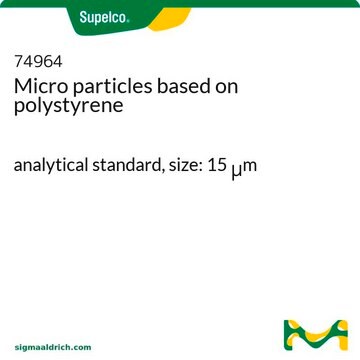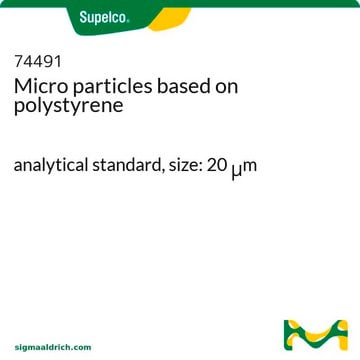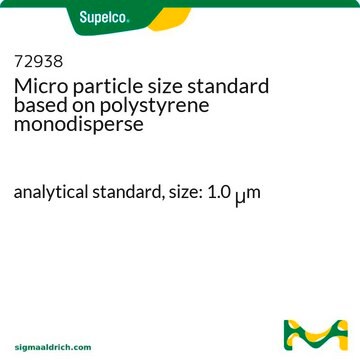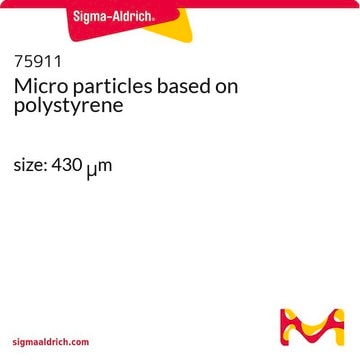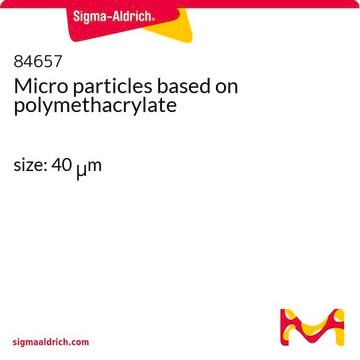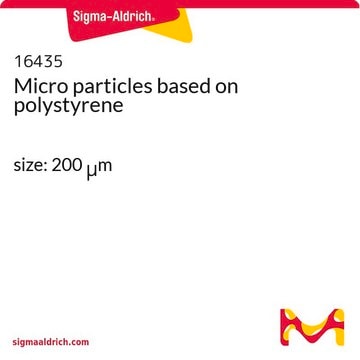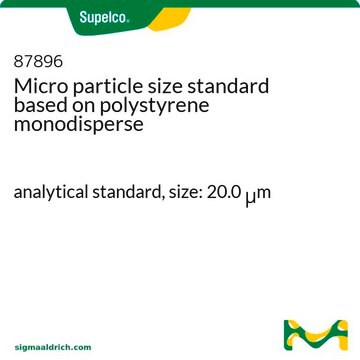84135
Micro particles based on polystyrene
analytical standard, size: 30 μm
Synonym(s):
Polystyrene latex particles (30 μm), Polystyrene microbeads (30 μm), Polystyrene microspheres (30 μm), Polystyrene microparticles (30 μm), Latex beads from PS
About This Item
Recommended Products
grade
analytical standard
Quality Level
form
aqueous suspension
particles
crosslinking
2 % cross-linked
concentration
10% (solids)
particle size
30 μm std dev <0.4 μm, coeff var <1%
density
1.05 g/cm3
application(s)
glass & ceramic
industrial qc
pharmaceutical
format
neat
storage temp.
2-8°C
Looking for similar products? Visit Product Comparison Guide
General description
Application
Also used to:
- investigate the impact of polystyrene microplastics on marine biota and organic matter
- study optical confinement in optofluidic laser measurements
Features and Benefits
- suitable for routine instrument calibration checks, testing and corrections
- available in 5 and 10 mL pack sizes as neat samples
Analysis Note
Storage Class Code
11 - Combustible Solids
WGK
WGK 3
Flash Point(F)
Not applicable
Flash Point(C)
Not applicable
Personal Protective Equipment
Choose from one of the most recent versions:
Already Own This Product?
Find documentation for the products that you have recently purchased in the Document Library.
Customers Also Viewed
Our team of scientists has experience in all areas of research including Life Science, Material Science, Chemical Synthesis, Chromatography, Analytical and many others.
Contact Technical Service